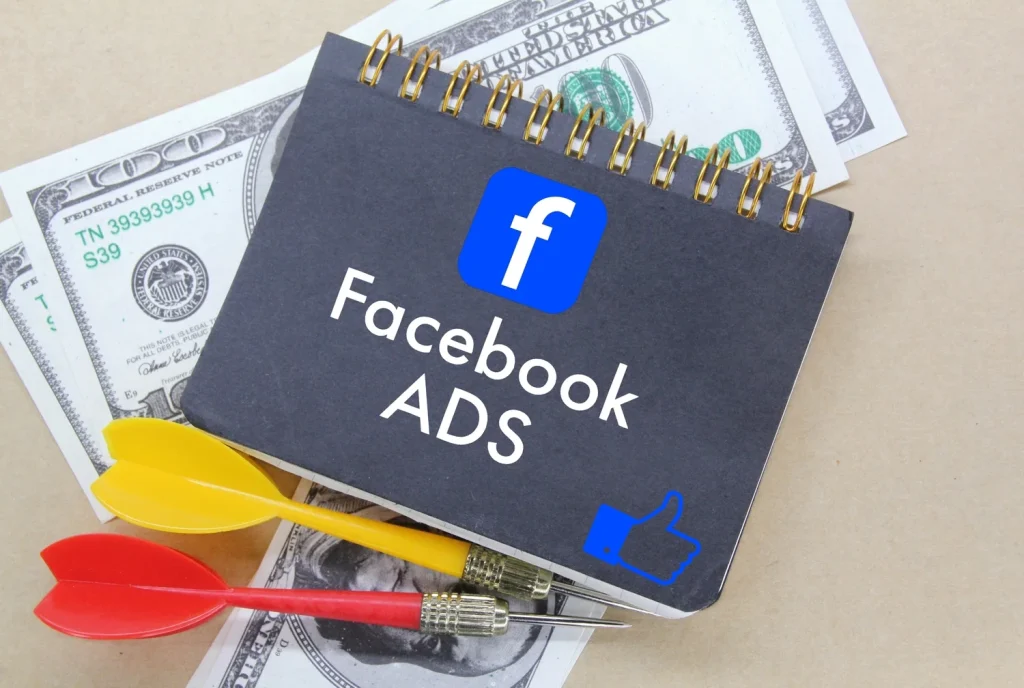
Maximize ROI with Facebook Ads
Introduction to Facebook Ads
In today’s digital landscape, Facebook Ads have become a cornerstone of online marketing strategies for businesses of all sizes. With over 2.9 billion monthly active users, the platform offers unparalleled access to a vast audience, making it a prime venue for advertisers aiming to increase their reach and drive conversions.
But what exactly are Facebook Ads? They are paid advertisements that appear on Facebook and its associated platforms, such as Instagram and Messenger. Advertisers can create targeted campaigns to reach specific demographics, interests, and behaviors, ensuring that their messages resonate with the right audience.
Types of Facebook Ads
There are several types of Facebook Ads available, each designed to achieve specific marketing objectives. Here are the most common formats:
- Image Ads: Simple yet effective, these ads consist of a single image that conveys the brand message. They are ideal for showcasing products or services.
- Video Ads: Engaging and dynamic, video ads can capture attention quickly. They are perfect for storytelling and demonstrating products in action.
- Carousel Ads: This format allows advertisers to showcase multiple images or videos within a single ad, enabling potential customers to swipe through different offerings.
- Slideshow Ads: Slideshow ads create a video-like experience by combining several images. They are a great option for businesses with limited video resources.
- Collection Ads: Designed for mobile users, collection ads showcase a primary image or video followed by several product images, encouraging users to browse and shop directly.

Setting Your Goals for Facebook Ads
Establishing clear and measurable goals is crucial for a successful Facebook Ads campaign. Your goals will guide your strategy, help measure success, and assess campaign effectiveness. Here are some common objectives businesses set for their Facebook advertising:
Common Goals for Facebook Advertising
- Brand Awareness: Aim to reach a broad audience to enhance visibility, especially useful for new businesses or product launches.
- Lead Generation: Focus on collecting contact information from potential customers through user-friendly forms within Facebook.
- Sales Conversions: Drive direct sales by encouraging users to purchase from your website or through Facebook.
- Engagement: Foster community interaction by increasing likes, comments, shares, and other forms of engagement with your content.
- App Installs: Promote your mobile app to encourage downloads through targeted campaigns.
Aligning Your Goals with Your Target Audience
Once your goals are set, align them with your target audience by considering the following:
- Understand Your Audience: Utilize tools like Facebook Insights to gather demographic and behavioral data, tailoring your ads accordingly.
- Create Buyer Personas: Develop profiles of your ideal customers to guide your messaging and visuals, ensuring your ads resonate with their needs.
- Set SMART Goals: Formulate goals that are Specific, Measurable, Achievable, Relevant, and Time-bound. For instance, instead of a vague goal like “I want more sales,” specify “I want to increase sales by 20% over the next quarter through Facebook Ads”.
By establishing clear goals and aligning them with your audience, you create a strong foundation for your Facebook Ad campaigns. This clarity aids in crafting effective ads and simplifies the process of measuring success and making adjustments.
Targeting Your Audience Effectively
One of the key advantages of Facebook Ads is its precise audience targeting. Effective targeting ensures your ads reach individuals most likely to engage and convert into customers. Here’s how to optimize audience targeting in your Facebook advertising efforts.
Why Audience Targeting is Crucial for Facebook Ads
Targeting is vital as it allows you to allocate your advertising budget efficiently, focusing on users who are more likely to respond. This approach not only boosts conversion rates but also maximizes your return on investment (ROI), enhances engagement, and drives sales.
Defining Your Target Audience
When defining your target audience, consider these factors:
- Demographics: Use Facebook’s options to target users by age, gender, education, etc. For example, a luxury brand might target affluent individuals aged 30-50.
- Interests: Target users based on their hobbies and interests. For instance, fitness product ads can reach those interested in health and wellness.
- Behaviors: Focus on users’ purchasing behaviors and device usage, such as those who recently made online purchases.
- Custom Audiences: Create audiences from your existing customer data, like email lists, to retarget users who have shown interest.
- Lookalike Audiences: Target new users who resemble your existing customers, expanding your reach to potential buyers.
Tools for Audience Targeting
Facebook offers several tools to enhance your targeting efforts:
- Facebook Audience Insights: Provides valuable data about your audience, helping refine your targeting strategy.
- Ad Manager: Allows you to create and manage ads with detailed audience targeting options.
- Pixel Tracking: Implement the Facebook Pixel on your website to track user behavior and create targeted ads based on specific actions.
By understanding and effectively targeting your audience, you can create tailored ads that resonate with potential customers, enhancing your chances of achieving your advertising goals and driving higher engagement and conversions.

Creating Compelling Facebook Ads
Crafting effective Facebook Ads is vital for capturing your target audience’s attention and driving engagement. A well-designed ad can turn a casual scroll into a click. Here are key elements to consider:
What Makes an Effective Facebook Ad?
- Engaging Ad Copy: Ensure your copy is clear, concise, and compelling. Start with a strong hook, use active language, and highlight benefits while addressing pain points.
- Example: Instead of “Our software is great for small businesses,” say, “Transform your small business with our easy-to-use software that saves you hours each week!”
- Eye-Catching Visuals: High-quality images or videos are crucial. Ensure they represent your brand and resonate with your audience, aligning with your message.
- Image Ads: Use relevant, appealing images that meet Facebook’s size specifications.
- Video Ads: Keep videos short (15 seconds or less), engaging, and include captions for sound-off viewing.
- Strong Call-to-Action (CTA): A compelling CTA drives users to take action, such as visiting your site or signing up for a newsletter. Use clear, actionable language.
- Examples: “Shop Now,” “Learn More,” “Sign Up Today.”
- Ad Format Considerations: Choose the right format based on your goals:
- Carousel Ads: Showcase multiple products or features.
- Collection Ads: Create a rich shopping experience for mobile users.
Best Practices for Ad Design
- Stay Consistent with Branding: Reflect your brand’s identity with consistent colors, fonts, and messaging across all ads.
- Test Different Variations: Conduct A/B testing on headlines, visuals, and CTAs to find what resonates best with your audience.
- Optimize for Mobile: Ensure ads are mobile-friendly using vertical images or videos and concise text.
- Utilize Facebook’s Ad Preview Tool: Preview how your ads will look on different devices to make necessary adjustments before launching.
By focusing on these elements, you can create compelling Facebook Ads that engage your audience and encourage action. Remember, successful advertising hinges on understanding your audience and delivering relevant content that meets their needs.
Facebook Ad Campaign Management
Effective Facebook Ad Campaign Management is essential for maximizing your advertising success. This process involves planning, executing, monitoring, and optimizing your ads to achieve desired outcomes. Here are key steps and best practices for managing your Facebook ad campaigns effectively.
What is Facebook Ad Campaign Management?
Facebook Ad Campaign Management encompasses creating, monitoring, and optimizing your advertising efforts on Facebook to meet specific marketing goals. This includes setting up campaigns, defining audiences, allocating budgets, analyzing performance, and making data-driven adjustments.
Steps to Set Up a Facebook Ad Campaign
- Define Your Campaign Objective: Determine your primary goal, such as brand awareness, lead generation, driving traffic, or increasing sales. Choose an objective that aligns with your overall marketing strategy.
- Set Your Budget: Decide on your spending limit. You can set a daily budget for daily spending limits or a lifetime budget for overall campaign spending.
- Choose Your Audience: Utilize Facebook’s targeting options to define your audience based on demographics, interests, and behaviors. Consider creating custom and lookalike audiences to reach users similar to your current customers.
- Design Your Ads: Craft compelling ad copy and visuals that align with your campaign objective and resonate with your target audience.
- Select Ad Placement: Choose where your ads will appear, such as the Facebook news feed, Instagram feed, or Stories. You can opt for automatic placements for optimization or manually select placements.
Monitoring and Optimizing Your Campaign Performance
Once your campaign is live, continuous monitoring and optimization are crucial. Here are some practices to follow:
- Track Key Metrics: Use Facebook Ads Manager to monitor metrics like impressions, clicks, click-through rate (CTR), conversion rate, and return on ad spend (ROAS) to assess performance.
- A/B Testing: Regularly test different ad variations by changing one element at a time—such as the image, copy, or CTA—to identify what works best.
- Adjust Targeting: Refine your targeting criteria if certain audience segments underperform. Focus on demographics with higher engagement or adjust messaging for different segments.
- Budget Reallocation: If some ads perform exceptionally well, consider reallocating your budget to prioritize those efforts, enhancing overall campaign performance.
- Review Ad Frequency: Monitor how often your ads are shown to the same users. High frequency can lead to ad fatigue, so refresh your creatives or adjust targeting if necessary.
By effectively managing your Facebook Ad Campaigns, you can ensure your advertising efforts align with your goals and yield optimal results. In the next section, we’ll discuss how to analyze your Facebook Ads performance for informed future campaigns.

Analyzing Your Facebook Ads Performance
Analyzing the performance of your Facebook Ads is essential for understanding how well your campaigns achieve their goals. By regularly reviewing key metrics and making data-driven adjustments, you can optimize your strategy, maximize ROI, and ensure your ads resonate with your target audience. Here’s how to effectively analyze your Facebook Ads performance.
Key Metrics to Track for Facebook Ads
- Impressions: Indicates how many times your ad was displayed. While it doesn’t reflect engagement, it provides insight into your campaign’s reach.
- Click-Through Rate (CTR): Measures the percentage of users who click on your ad after seeing it. A higher CTR suggests your ad is compelling. Calculate CTR using:
CTR = (Total Clicks / Total Impressions) × 100
- Cost Per Click (CPC): Shows how much you pay for each click. Monitoring CPC helps assess the efficiency of your ad spend; a lower CPC indicates a more effective ad.
- Conversion Rate: Tracks the percentage of users who complete the desired action after clicking your ad (e.g., making a purchase). A high conversion rate indicates alignment between your landing page and ad messaging.
- Return on Ad Spend (ROAS): Measures revenue generated for every dollar spent on advertising. Calculate ROAS using:
ROAS = Revenue from Ads / Cost of Ads
- A ROAS greater than 1 indicates profitability.
- Ad Relevance Diagnostics: Facebook provides relevance scores assessing how well your ad resonates with your audience, including Quality Ranking, Engagement Rate Ranking, and Conversion Rate Ranking. Higher scores can lead to lower costs and better placements.
How to Use Facebook Insights for Better Analysis
- Facebook Ads Manager: Offers a comprehensive overview of ad performance, allowing you to filter metrics by campaign, ad set, or individual ad. Regularly check to track performance trends.
- Custom Reports: Create reports focusing on specific metrics that matter most to your business, helping identify areas for improvement.
- Segmentation: Analyze performance by segmenting your audience based on demographics, interests, and behaviors to refine targeting and messaging strategies.
- Attribution Models: Use Facebook’s tools to understand how different touchpoints contribute to conversions, identifying the most effective ads or campaigns.
Making Data-Driven Decisions
After analyzing your metrics, take actionable steps based on your findings:
- Identify High-Performing Ads: Look for ads with high CTR and conversion rates. Analyze their success factors and replicate those elements in future campaigns.
- Adjust Underperforming Ads: Rethink the copy, visuals, or targeting of ads showing low engagement or high CPC. Don’t hesitate to pause or stop ineffective ads.
- Refine Your Targeting: Use insights to adjust targeting parameters. Allocate more budget toward audience segments performing better.
- Optimize Landing Pages: If ads have a high CTR but low conversion rates, ensure the landing page aligns with the ad’s messaging and provides a seamless user experience.
By diligently analyzing your Facebook Ads performance and making data-driven decisions, you can continuously improve your advertising strategy and maximize your ROI. In the next section, we’ll discuss strategies to further enhance ROI from your Facebook Ads, ensuring significant returns on your investments.

Strategies to Maximize ROI from Facebook Ads
Maximizing your return on investment (ROI) from Facebook Ads is essential for effective budget use and achieving marketing goals. Here are several proven strategies to help you enhance ROI and drive better results from your advertising efforts.
- Optimize Targeting
- Refine Audience Segments: Continuously analyze audience performance and adjust targeting based on engagement metrics. Use custom and lookalike audiences to reach individuals more likely to convert.
- Layer Targeting Options: Combine demographics, interests, and behaviors to create refined segments, helping you connect with users who resonate with your ads.
- Utilize Retargeting Campaigns
- Website Visitors: Use the Facebook Pixel to track users who visit your site. Create retargeting ads to remind them of products they viewed or encourage purchase completion.
- Engaged Users: Target users who have interacted with your ads or social media profiles. Retargeting these individuals can lead to higher conversion rates since they are already familiar with your brand.
- A/B Test Your Ads
- Test One Variable at a Time: Change only one element, such as the headline or image, to determine which version performs better. This helps pinpoint what drives engagement and conversions.
- Analyze Results: After sufficient testing, analyze the data to identify winning variations and implement the best-performing ads in your campaigns.
- Focus on Ad Quality and Relevance
- Create Compelling Content: Invest time in crafting engaging visuals and persuasive copy that addresses your audience’s needs and pain points.
- Monitor Relevance Scores: Keep an eye on Facebook’s relevance diagnostics to understand ad performance. High relevance scores can reduce costs and improve placements.
- Optimize Landing Pages
- Ensure Consistency: Align the messaging and visuals on your landing page with your ad. Users should easily see the connection between the ad and landing page content.
- Simplify the Conversion Process: Minimize steps required for users to take action. Use clear CTAs and ensure forms are simple to fill out.
- Perform A/B Testing on Landing Pages: Test different variations of your landing pages to identify designs and messaging that lead to higher conversion rates.
- Continuously Monitor and Adjust
- Regularly Review Analytics: Frequently check key performance metrics in Facebook Ads Manager to adjust targeting, budget allocation, and ad creatives as needed.
- Stay Updated with Trends: The digital advertising landscape is constantly evolving. Stay informed about changes in Facebook’s algorithms, new ad features, and industry trends to keep your campaigns competitive.
By implementing these strategies, you can maximize your ROI from Facebook Ads, ensuring your advertising budget is spent effectively and your marketing goals are achieved.
- Continuously Monitor and Adjust
- Regularly Review Analytics: Frequently check key performance metrics in Facebook Ads Manager to adjust targeting, budget allocation, and ad creatives as needed.
- Stay Updated with Trends: The digital advertising landscape is constantly evolving. Stay informed about changes in Facebook’s algorithms, new ad features, and industry trends to keep your campaigns competitive.
By implementing these strategies, you can maximize your ROI from Facebook Ads, ensuring your advertising budget is spent effectively and your marketing goals are achieved.

Conclusion
In conclusion, effectively managing your Facebook Ads involves a comprehensive approach that encompasses several key elements. Setting clear goals is the foundation of any successful campaign, guiding your strategy and ensuring alignment with your marketing objectives. Targeting your audience effectively allows you to reach the right individuals, maximizing engagement and conversion potential.
Creating compelling ads with engaging visuals and persuasive copy is essential for capturing attention and driving action. Once your campaigns are live, effective management and continuous performance analysis are crucial for optimizing results and making data-driven adjustments. Finally, implementing strategies to maximize ROI ensures that your advertising budget is utilized efficiently, ultimately leading to better outcomes and achieving your business goals.
At Danabak Digital Marketing Agency, we understand the intricacies of Facebook advertising and are dedicated to helping you navigate these elements to enhance your advertising efforts. By integrating these practices with our expertise, you can drive significant results and take your Facebook Ads to the next level. Let us partner with you to achieve your marketing goals and maximize your ROI.
For more insights on Facebook advertising, you can find the Facebook Ads Guide Here.
Read More: Finding the Right Web Designer in Charlotte: A Guide for Small Businesses








